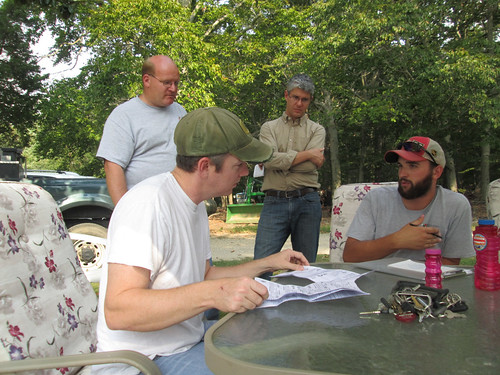
Government agencies and organizations in Pennsylvania, Maryland and Virginia have been building water quality trading systems during the past few years to lower the cost of regulatory compliance with water quality laws.
These trading systems enable farmers, ranchers and forest landowners in these Chesapeake Bay-area states to generate income by selling water quality credits to regulated entities like waste water treatment facilities and developers. As this market matures, people will be able to incorporate clean water into their overall management objectives more seamlessly.
The Alliance for the Chesapeake Bay, with funding from a USDA Conservation Innovation Grant, is developing tools to make it easier for people who own or manage forests to offer up their forested land for possible water quality and other ecosystem service credits. The alliance is working to streamline the credit development process for water quality trading on forested land in the region.
“It can be quite confusing to figure out the different options,” said Eric Sprague, director of Chesapeake Forest Programs for the alliance. “That first step is figuring out your potential.”
The new tools will help forest owners and managers determine if they’re eligible, see which program makes the most sense for them and find people that can help.
And then from there, they can enter an online marketplace, connecting them with companies or groups looking to purchase ecosystem service credits. For example, these credits can enable developers to build in one place because they’ve purchased a credit pledging forested land will stay in its natural use nearby. Typically, the credit protects forests in the same watershed as the area for which it was purchased.
“Forests are the least polluting land use,” Sprague said. “The amount of forests in a watershed is critically important, and we see water quality declines when forests are removed.”
Some of the credit-related tools offered by the alliance’s Forests for the Bay program include: LandServer: Enables landowners to perform an easy conservation assessment of their property and determine potential eligibility for tax, cost-share and ecosystem service program; Conservation Marketplace: Enables landowners to find conservation professionals, learn about funding opportunities, and find buyers for their actions; and Woodlands Crediting Platform: Helps make project development easier for landowners.
The Conservation Innovation Grant from NRCS played an important part in developing this credit system, for both the online tools and for financial assistance for landowners wanting to pilot the system.
“You need proven examples for people to adopt it,” Sprague said. “Throughout putting the puzzle together, CIG was very helpful in getting this concept going.”
The alliance received the grant in 2012 from USDA’s Natural Resources Conservation Service. Like the alliance, recipients of this grant program work with farmers, ranchers and forest landowners to develop and demonstrate the new technologies and approaches.
The grant program started in 2004 as a way to help demonstrate and transfer efficient and environmentally friendly farming and ranching.
